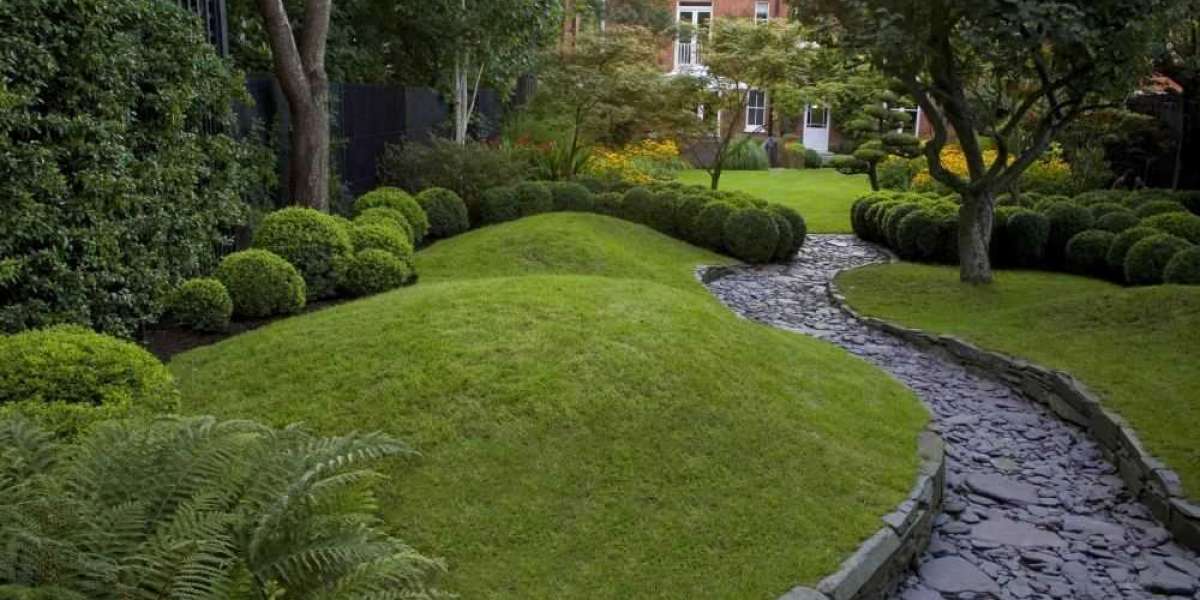Introduction
A lush and well-designed landscape can transform your yard into a breathtaking oasis, adding value to your property and creating a haven for relaxation. Whether you're a seasoned gardener or a novice, mastering the art of landscape design can be a game-changer. In this comprehensive guide, we will delve into the key principles, tips, and tricks to help you unleash the full beauty of your yard through effective landscape design.
Key Principles of Landscape Design
1. Unity and Harmony
Creating unity and harmony in your landscape design is crucial for a visually appealing space. This involves using a consistent theme, color scheme, or plant palette throughout your yard. Choose a central element that ties everything together, such as a focal point like a fountain, statue, or a beautifully crafted flower bed.
2. Balance
Balance is essential for a well-designed landscape. Achieve balance by distributing visual weight evenly across your yard. If you have a large tree on one side, balance it with a group of smaller shrubs or plants on the opposite side. This creates equilibrium and a sense of completeness in your outdoor space.
3. Proportion and Scale
Maintaining proportion and scale ensures that elements in your landscape work well together. Consider the size of your yard and choose plants and features that complement its dimensions. A small yard may benefit from smaller, more delicate plants, while larger spaces can accommodate larger, more robust elements.
4. Variety
Incorporating a variety of plants, textures, and colors adds interest to your landscape. Mix different types of plants, such as flowering perennials, shrubs, and ornamental grasses, to create a dynamic and visually stimulating environment.
Tips and Tricks for Effective Landscape Design
1. Plan Before You Plant
Before diving into the world of landscape design, take the time to create a detailed plan. Consider the layout of your yard, the amount of sunlight each area receives, and the type of soil present. Planning ensures that you make informed decisions about plant placement and hardscape features.
2. Choose Appropriate Plants
Selecting the right plants for your climate and soil type is crucial for a successful landscape. Native plants are often an excellent choice as they are adapted to the local environment, requiring less maintenance and resources. Consider factors such as bloom time, color, and maintenance requirements when choosing plants for different areas of your yard.
3. Focus on Seasonal Interest
Create a landscape that offers visual interest throughout the year. Choose a variety of plants with different bloom times, ensuring that your yard remains vibrant during spring, summer, and fall. Incorporate evergreen plants to provide structure and color during the winter months.
4. Implement Hardscape Elements
Hardscape elements, such as paths, patios, and retaining walls, can enhance the functionality and aesthetics of your landscape. Choose materials that complement the overall design and style of your yard. Incorporate seating areas and focal points to encourage people to linger and enjoy the outdoor space.
Frequently Asked Questions (FAQs)
Q1: Can I tackle landscape design on my own, or should I hire a professional?
A1: While DIY landscape design is certainly possible, hiring a professional can bring expertise and a fresh perspective to your project. Professionals can also help you avoid common pitfalls and ensure that your design meets your specific needs and local regulations.
Q2: How do I deal with uneven terrain in my yard?
A2: Uneven terrain can add character to your landscape, but it may present challenges. Consider terracing or adding retaining walls to create level areas. Choose plants that thrive in sloped conditions, and use mulch or ground cover to prevent erosion.
Q3: What are low-maintenance plant options for busy homeowners?
A3: Low-maintenance plants, such as succulents, ornamental grasses, and native plants, are ideal for busy homeowners. These plants require minimal care while still adding beauty to your landscape. Consider incorporating a mix of low-maintenance and more demanding plants for a balanced design.
Q4: How can I create a sustainable landscape?
A4: To create a sustainable landscape, choose native plants, implement water-saving irrigation systems, and practice responsible pest management. Use organic fertilizers and mulch to enrich the soil naturally. Additionally, consider incorporating recycled materials into your hardscape elements.
Well-Researched Insights
Landscape design is a multifaceted endeavor that requires a blend of creativity and practicality. In addition to the principles and tips mentioned, staying informed about the latest trends and innovations in landscape design can elevate your project. Explore online resources, attend local gardening workshops, and consult with experts to stay abreast of the evolving world of landscape design.
Conclusion
Transforming your yard into a stunning landscape is a gratifying journey that begins with thoughtful planning and design. By incorporating the key principles, tips, and tricks outlined in this guide, you can unleash the full potential of your outdoor space. Whether you're aiming for a vibrant garden, a tranquil retreat, or a family-friendly play area, landscape design is the key to achieving a beautiful and functional yard that suits your lifestyle and preferences. Start your landscape design adventure today and watch as your yard blossoms into a breathtaking haven of natural beauty.







